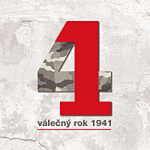International symposium „Domestic and Foreign Czechoslovak Resistance in the Wartime Year of 1941 “
 The third year of the war rather stands in the shadow of preceding and subsequent wartime events. But it was in 1941, in both Great Britain and the occupied Czech lands, that events occurred which in the long-term influenced the course and outcome of the Czechoslovak resistance movement as well as the political and social evolution of post-war Czechoslovak society.
The third year of the war rather stands in the shadow of preceding and subsequent wartime events. But it was in 1941, in both Great Britain and the occupied Czech lands, that events occurred which in the long-term influenced the course and outcome of the Czechoslovak resistance movement as well as the political and social evolution of post-war Czechoslovak society.
- Date: 6 October 2011
- Venue: Institute for the Study of Totalitarian Regimes
- Language of proceedings: Czech, Slovak
- Deadline for sending registration forms and abstracts: 30 June 2011
- Contact information: bara.kopecka@ustrcr.cz
- Symposium registration form: DOC , RTF
- Annotation of the symposium
If we have to briefly discuss this time period, or to outline at least some of its key events, we cannot overlook the following watershed moments of modern Czechoslovak history. At the beginning of May 1941, the youngest Czechoslovak fighter squadron was established in the Royal Air Force. On 18 July, the Czechoslovak government-in-exile was definitively recognised, not just by Great Britain, but also by the Soviet Union. After the Soviet Union entered the war, communists in the Protectorate joined the “Beneš” resistance. The Slovak Army participated in a campaign on the eastern front alongside the Wehrmacht. In September, the government of the Slovak Republic issued the Jewish Code. Czechoslovak military units began to be established in the Soviet Union. On 27 September, the deputy Reichsprotektor Reinhard Heydrich arrived in occupied Prague. In mid-October, the 11th Czechoslovak Battalion – East was deployed near Tobruk. In the same month, the first transport of the Jewish population was moved from Prague to the ghetto in Lodz. Under pressure from the occupation authorities, the Protectorate government introduced forced labour for men aged 18 to 50 years of age on 23 January 1941. The year 1941 came to a symbolic close on 29 December when the Silver A, Silver B and Anthropoid groups were embedded in the Protectorate. The preceding events offer a number of interesting contributions for the upcoming symposium, and it is evident that we now have a different perspective on many of these events today, which has been made possible by the discovery of new archive materials and testimonies as well as the overall concept of cooperation among the community of historians in the European Union.
Thematic areas of the symposium:
- the Czechoslovak resistance abroad
- the use of forced labour
- repression by the occupation authorities
- local resistance


